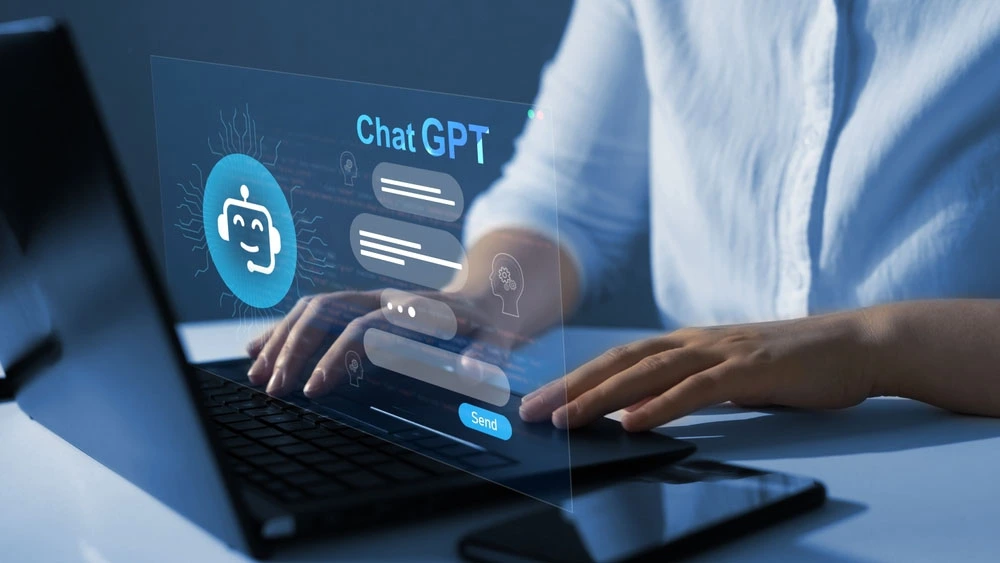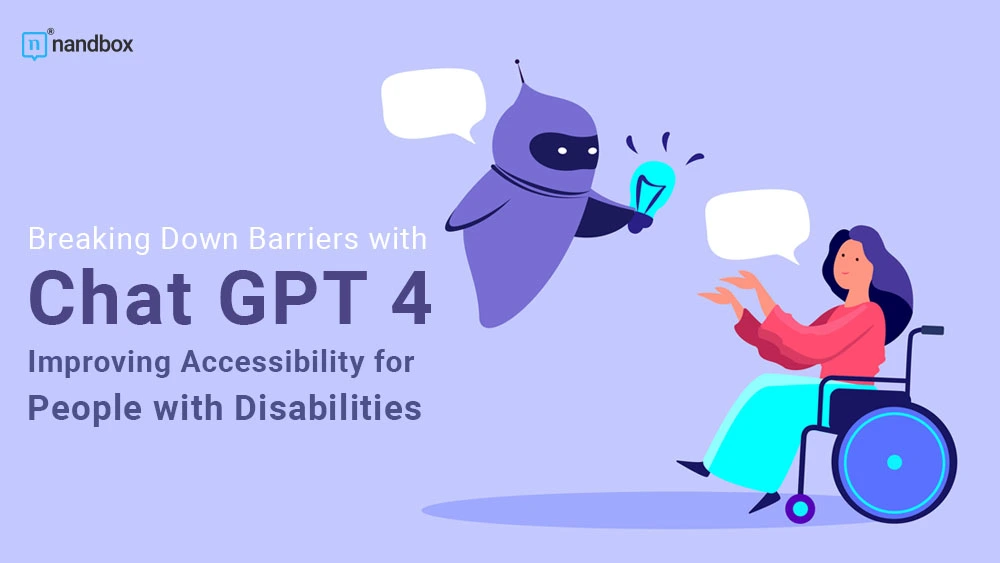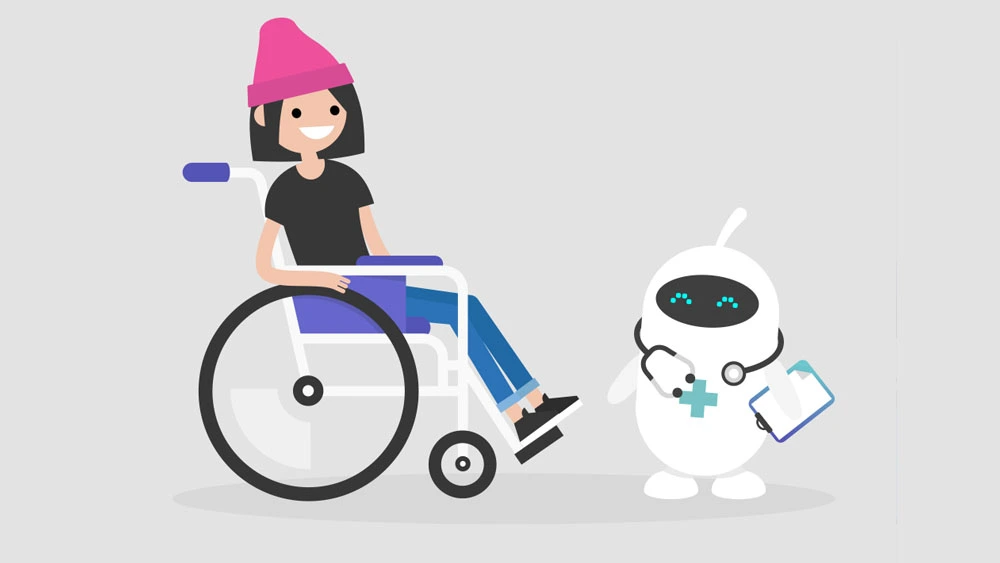There has always been a gap between people who actually use the internet and those who don’t. You’re probably asking, “Is there still anyone who doesn’t use the Internet?” The shocking answer would be yes. Some people just prefer their privacy over anything else. That is why, for example, they don’t have social media profiles and keep a very low-key appearance when they surf the internet. Those are the ones with the option of keeping themselves shut. What about other people with disabilities that prevent them from accessing the internet? or simply limits their accessibility? Those are the ones for which we have a solution now. In this article, we’ll talk about: What is GPT 4? And how does it improve accessibility and break down all barriers for people with disabilities?
What Is GPT 4: A Quick Overview

GPT 4, also known as Chat GPT 4, is an artificially intelligent chatbot created by a company called Open AI. This company has a vision of creating artificial intelligence systems that benefit everyone through their services. The company invested heavily in several things. These things helped bring the Chat GPT vision and idea to life. They invested in research, engineering, and professional execution of the idea. That is, to provide people with the utmost experience of dealing with a human-like chatbot.
So what is GPT 4? Simply put, it is an artificial intelligence (AI) chatbot. The bot was released in November 2022. It was developed on top of the OpenAI large language models (LLMs) from the GPT-3.5 and GPT-4 families, and it has been fine-tuned (a method of transfer learning) using both guided and reinforced learning strategies.
How Does ChatGPT Improve Accessibility for People With Disabilities?
GPT-4 has the potential to improve accessibility for people with disabilities in several ways. Its natural language processing capabilities can help individuals with speech and language impairments communicate more effectively using this technology. Moreover, it can also assist individuals with visual impairments. That is by using its new feature update that understands how to generate text from images. It helps by generating descriptive text for images and videos. Additionally, GPT-4 can be used to create more accurate and comprehensive captions and transcripts for audio and video content. This makes it more accessible to individuals with hearing disabilities. Overall, GPT-4 has the potential to revolutionize accessibility and improve the quality of life for people with disabilities.
This is a technological leap that will help us evolve in a much better way. GPT 4 also paves the way for better life improvements for people with disabilities. Furthermore, it helps bridge the gap between them and people who live their lives normally without facing any daily difficulties. It is of great importance that we involve our human side in our creations as we try to help each other in every possible way. That is what Open AI did, and that is what we aspire to do with our services.
What Are the Ethical Considerations Surrounding the Use of GPT-4 in Accessibility?
As with any new technology, there are ethical considerations surrounding the use of GPT-4 for accessibility. One concern is the potential for bias in the language model. Unfortunately, this could result in inaccurate or discriminatory content. Sadly, this could lead to human conflicts and social problems. Additionally, there are concerns about privacy, cybersecurity, and data security. That is because GPT-4 relies on large amounts of data to function. It will be important for developers and users of GPT-4 to address these ethical considerations and ensure that the technology is used in a responsible and inclusive manner.
One of the greatest ethical considerations that we need to keep in mind is the negative economic impact that AI technology causes. Artificial intelligence solutions can result in major fundamental shifts in the nature of work and labor, such as the elimination of some occupations through the use of automation. This might lead to mass unemployment, labor displacement, and an aggravation of current workplace disparities. According to statistics, this new kind of innovation may have a significant impact on and pose a serious threat to 300 million full-time jobs worldwide. Yes, we did mention that it solves problems and bridges gaps between people with disabilities and normal daily life activities, but that doesn’t mean that it doesn’t pose a threat.
The Reduction of Distance Between Different Communities Through GPT 4
Different communities lie between various options. From race, gender, politics, and religion. There are a lot of communities that have certain communication gaps that the bot is working on solving. This is another pro that Open AI’s GPT 4 leverages on its side. The bridging of gaping communities has led to a certain demand for the chatbot. It is of great trend, importance, and service nowadays. Its natural language processing technology helps provide a human-like conversation that saves people the boredom of dealing with a tech device. As well as intriguing their curiosity about how far it can go with them.
GPT 4 Breaking the Barriers Between Different Cultures
It might be quite challenging to comprehend diverse cultures and languages, but nowadays technology has made it quite easier, so we might be able to close communication gaps at last. Chat-GPT 4 is assisting in bridging the language divide on a worldwide scale. The bot could simply understand different languages and offer you the perfect translation for whatever the person you’re communicating with is saying. Open AI’s GPT 4 is revolutionizing the way we will live our lives in the future. It is breaking every barrier we might be facing currently. That includes language and translation barriers as well. The bot will allow people to communicate easily and learn new languages in a very interesting way.
Final Thoughts
People with disabilities already face daily troubles. Some aren’t accepted by society or treated like equal fellow human beings; others are simply living a very harsh life that we wouldn’t be able to bear. This calls for us to stand by them, support them, and try to help them in every possible way. You would want this kind of help if you were in their shoes. That is why Open AI is praised for being a creation that helps people overcome certain difficulties and live their lives much more comfortably.
You too can help people with disabilities by creating an app that makes their lives easier. There are a very small number of applications for that. The most common example is “Be My Eyes,” an app that helps visually impaired people connect with people for help and guidance if they need to get something but can’t reach it. It is a great app idea that has helped facilitate different lives. That is why we advise you if you want to make a difference. Create a native app with nandbox’s no-code app builder. It is easy, beneficial, and will only take minutes.
With our app builder, you’ll be in control of every single detail in your app. There is no need for programmers to dominate your app idea with all the things you can and can’t do. Another pro we offer you is the cost reduction of hiring a development team. It is all easy, simple, and for a fraction of the cost. Bring your app idea to life with nandbox and help create another app that will provide great services for people with disabilities.




